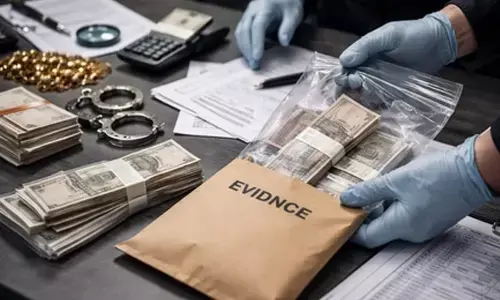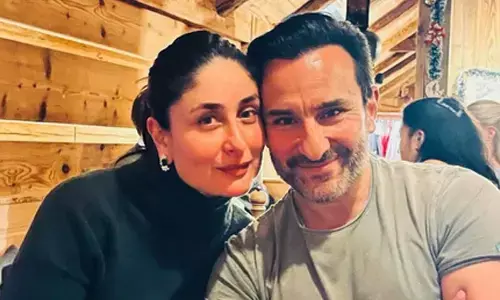Telangana from ancient times to KCR

Telangana has very ancient history behind it. As the region since ancient times consisted of people speaking Telugu Language, it became known as Telangana.
Telangana has very ancient history behind it. As the region since ancient times consisted of people speaking Telugu Language, it became known as Telangana. It is also said that the word TILINGA became popular from Kakatiya regime and Telangana was derived from TILINGA. Since 1776 the area that was under the administrative control of Nizam rulers with Hyderabad as capital was recognized as Telangana.
Prior to that Shatavahanas ruled this area, Telangana, from Kotilingala of Karimnagar district as their capital. They were succeeded by Ikshvakas. Simultaneously Vakatakas were under control of northern parts of Telangana. These were succeeded by Vishnukundins who ruled till Seventh century. Later Badami Chalakyas, Rashtrakootas, Chalakyas of Vemulavada, Chalakyas of Kalyana expanded the area and ruled.
Later Kakatiya kings during 1163-1323 established huge kingdom which at that time recognised as larger than any other kingdoms in the entire southern Telangana. It was a golden period in Telangana during the rule of Kakatiyas and tremendous development took place then. Agriculture became profitable through cultivation under chain of Tanks in the whole of Telangana.
Around 1500 AD the Bahamani kingdom split in to five small states and one of them was Qutub Shahi of Golconda. Sultan Quli Qutub Shah was the founder of Qutub Shahi Dynasty and established Golconda kingdom. In 1592 the capital was shifted from Golconda to Hyderabad. Hyderabad was built during Qutub Shahis days. Then it was known as Bhagyanagar. Following the surrender accession of Golconda fort to Mughal emperors Nizam-ul-Mulk was appointed as Subedar there. Nizam declared independence subsequently and established Asaf Jahi Dynasty and rule. The dynasty rule came to an end with seventh Nizam Mir Osman Ali Khan.
The district administrative system and revenue administration dates back to Salar Jung who was Prime Minister during 1829-1883. As part of "District Formation Policy" which Salar Jung introduced the ten Telugu speaking districts including Hyderabad was brought under a separate region which is the present-day Telangana with 33 districts now.
When India attained independence the Hyderabad state did not accede into the nation. It was one of the three states which did not join. The other two were Junagadh and Kashmir. It was only after the Police Action the Hyderabad State merged with the country. It lost its independence since then and remained as part of Indian Nation. KM Munshi was appointed as Agent General after the successful completion of Police Action. Around that time there was an armed struggle in Telangana led by communists. In 1950 the civil Government was formed and MK Vellodi became Chief Minister in whose cabinet Burgula Ramakrishna Rao served as a minister till 1952 elections. Later following the victory of Congress Party in the elections it formed Government with Burgula Ramakrishna Rao as CM.
Around the same time in 1953 the Andhra region got separated from Madras State and consequently State of Andhra was formed. With a view to overcome the problems faced by Andhra Government at that time, there was thinking in certain sections to merge Telangana in to Andhra. This was however not acceptable to Telangana society at large. Apprehensions were voiced by many from Telangana against merger as they felt that Andhras would snatch away the resources of Telangana. There was already agitation against the system of employing people from other states and not from Telangana resulting in Mulki movement in 1952 itself. The "Gair-Mulki" movement also took place. Notwithstanding all this, Andhra Pradesh was formed merging Andhra and Telangana regions.
This was followed by what was known as "Gentlemen's Agreement" to check possible injustice to Telangana people. It was more in breach than in implementation right from the day one. The then Chief Minister Neelam Sanjeeva Reddy did not implement it in the first instance and the same continued later unchecked. Even the projects that were conceived in Hyderabad state were set aside by AP Government and they were redesigned suiting to the needs of Andhra Region. There was total injustice in every field. Exploitation of Telangana resources was in full swing. Even the jobs meant for Telangana people were given to Andhras. Mulki rules were grossly violated and jobs were given away to persons from Andhra and Rayalaseema regions. The assurance incorporated in the Gentlemen's Agreement to implement Mulki Rules was not adhered to.
All these led to the conclusion that unless Telangana State is separated from AP there would not be any justice to this region. This resulted in 1969 agitation for separate statehood. The then Congress Government did not concede the demand and harshly crushed the agitation. However, GO Number 36 was issued to send back the Andhras to that region. That was also breached and not implemented. The then Andhra leaders approached Supreme Court to do away with Mulki Rules for which the Court did not agree and supported the rules.
Even then also the rules were violated despite court ruling. Subsequently following an amendment to the Act, Andhra people were getting employment in Telangana without any problem. This resulted in another movement by Non-Gazetted Officers of Telangana region. Against this background, NT Rama Rao Government issued 610 GO which was also more in breach than in implementation. In addition, under the umbrella of constitutional provision of 14-F, Andhra people got in to employment in Hyderabad Zone. This resulted in agitation for removal of 14-F.
All these and many more violations and injustices with reference to Employment, Resources and water for irrigation resulted in formation of Telangana Rashtra Samiti (TRS) by Kalvakuntla Chandrashekhar Rao who resigned for his positions as an MLA and Deputy Speaker in 2001 and leading a non-violent movement for separate Telangana state. In addition, several efforts to attain his goal finally KCR undertook a fast unto death on November 29, 2009. Whole of Telangana people expressed their solidarity and fought for the cause hand in hand with KCR. Government of India had no option except to announce formation of Telangana on December 9, 2009. It had however gone back on its commitment and the agitation continued with more vigor. All sections of society took part in the great movement.
Finally, Parliament passed in 2014 the AP Reorganization Act 2014 and announced formation of Telangana State. The appointed date was fixed as June 2, 2014 and it came into existence since then. Telangana as the newest and 29th state of India was formed on June 2, 2014. Telangana Rashtra Samithi by securing majority of seats in the state Assembly formed Government with Kalvakuntla Chandrashekhar Rao as the First Chief Minister. After 51 months KCR preferred to go for early polls and winning a massive mandate he formed the second term government in December 2018. The Government completed Eight years in office. Thus, Telangana is the result of decade's long struggle of people protesting against discrimination and injustice.
Since he took over as CM, KCR has initiated and implemented a plethora of innovative programs, schemes and projects both welfare and development, that are not done anywhere in the Country or at the Central government. Irrigation projects were completed on war footing. Round the clock quality power is supplied. Schemes like Rythu Bandhu, Rythu Bhima and Dalit Bandhu are unique to this state.
Kaleshwaram Project is the world's largest multi-stage lift irrigation project. Mission Bhagiratha and Mission Kakatiya have been great flagship programs that were completed in record time. State has earned the distinction of introducing many first-of-its kind developmental and welfare programs in such a short period of time of eight years. All this is possible due to the dynamic leadership of CM KCR, his administrative skills, his visionary leadership and his innovative thinking. Yes, it is the role model state in the country and the credit goes to KCR and that is KCR.














